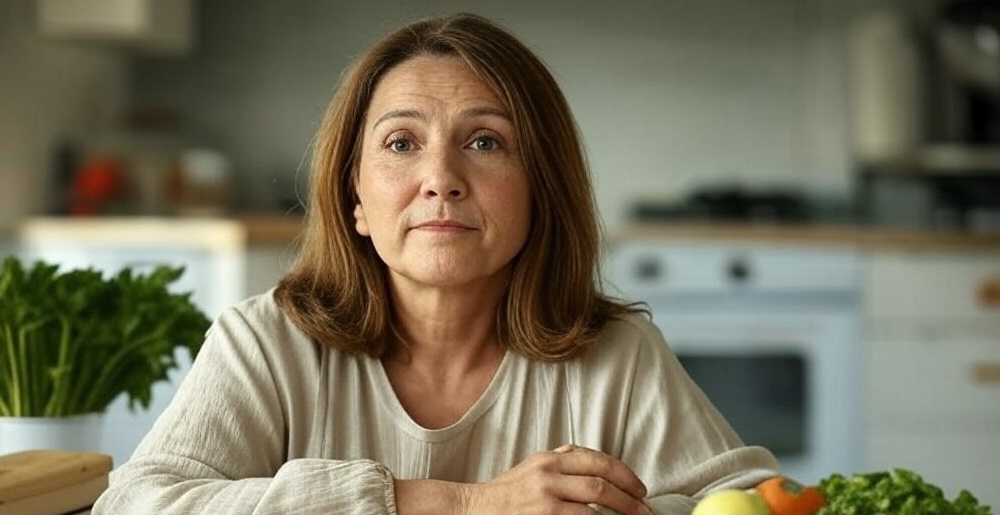Menopause is a significant phase in a woman’s life, bringing various physical and hormonal changes. One of the most noticeable and concerning shifts is the accumulation of visceral fat, the deep abdominal fat surrounding internal organs. Unlike subcutaneous fat, which sits just under the skin, visceral fat is more dangerous due to its link to serious health conditions like heart disease, type 2 diabetes, and metabolic syndrome.
Over 43% of menopausal women have obesity…
Many women find that even if their diet and exercise routines stay the same, they still experience increased belly fat after menopause. This is largely due to hormonal changes, metabolism shifts, and lifestyle factors.
So, what causes this increase in visceral fat, and more importantly, what can be done about it? Let’s dive in.
JUMP TO…
Hormonal Changes During Menopause and Their Impact on Fat Distribution
Breakdown of Estrogen & Fat Storage in More Detail
Why Does This Happen?
Health Risks of Increased Visceral Fat After Menopause
Why Do Women Gain More Visceral Fat During Menopause?
Effective Strategies to Manage Visceral Fat After Menopause
Can Hormone Replacement Therapy (HRT) Help?
Natural Supplements and Alternative Therapies
Hormonal Changes During Menopause and Their Impact on Fat Distribution
One of the biggest reasons for increased visceral fat post-menopause is the decline in estrogen levels. Estrogen plays a crucial role in fat distribution, and as it decreases, the body tends to store more fat in the abdominal area rather than the hips and thighs.
Breakdown of estrogen & fat storage in more detail:
Before menopause, estrogen helps regulate fat distribution by encouraging fat storage in areas like the hips, thighs, and buttocks. This is why premenopausal women often have a more pear-shaped body. Estrogen also plays a role in metabolism by influencing how the body processes fat and carbohydrates.

However, as estrogen levels decline during menopause, the way the body stores and distributes fat changes. Instead of primarily storing fat in the lower body (hips and thighs), the body shifts toward storing fat in the abdominal region, leading to a more apple-shaped figure.
Why Does This Happen?
- Reduced Estrogen Alters Fat-Storing Enzymes: Lower estrogen levels increase the activity of certain enzymes that promote fat storage in the belly area.
- Metabolism Slows Down: Estrogen helps maintain a higher metabolic rate by supporting muscle mass and energy expenditure. When it drops, metabolism slows, leading to easier fat gain.
- Insulin Sensitivity Decreases: Estrogen helps regulate insulin, the hormone that controls blood sugar. A drop in estrogen can lead to higher blood sugar levels and increased fat storage, particularly around the abdomen.
- Cortisol (Stress Hormone) Increases: As estrogen decreases, stress levels may rise, increasing cortisol production. High cortisol is directly linked to storing fat in the midsection.
- Increase in Androgen Levels: Some women experience a rise in androgen (male hormone) levels, which promotes fat storage in the midsection.
Health Risks of Increased Visceral Fat After Menopause
Carrying extra weight around the midsection isn’t just about aesthetics—it’s a major health concern. Increased visceral fat post-menopause has been linked to:
- Higher Risk of Cardiovascular Disease: Visceral fat raises bad cholesterol (LDL) and lowers good cholesterol (HDL), increasing heart disease risk.
- Increased Likelihood of Type 2 Diabetes: Insulin resistance, often exacerbated by menopause, can lead to higher blood sugar levels and diabetes.
- Higher Levels of Inflammation: Visceral fat releases pro-inflammatory compounds, which can contribute to chronic inflammation and metabolic syndrome.
Why Do Women Gain More Visceral Fat During Menopause?
Several lifestyle and physiological factors contribute to this unwanted belly fat increase:
- Reduced Physical Activity: Many women become less active due to lifestyle shifts, injuries, or fatigue, which can lead to weight gain.
- Muscle Loss (Sarcopenia): As we age, muscle mass naturally decreases, and since muscle burns more calories than fat, a decline in muscle contributes to a slower metabolism.
- Stress and Cortisol Levels: Menopause can bring about higher stress levels, increasing the production of cortisol, the stress hormone, which promotes belly fat storage.
Effective Strategies to Manage Visceral Fat After Menopause

1. Dietary Changes for Managing Menopausal Fat Gain
- Focus on Whole Foods: Eating lean proteins, healthy fats, and fiber-rich foods can help control appetite and metabolism.
- Increase Protein Intake: Protein preserves muscle mass and boosts metabolism, helping prevent fat gain.
- Reduce Processed Sugar and Refined Carbs: These spike blood sugar levels, leading to fat storage in the abdomen.
- Hydration Matters: Drinking enough water supports metabolism and digestion.
2. Exercise Strategies to Reduce Visceral Fat
- Strength Training: Lifting weights helps maintain muscle mass and increases resting metabolic rate.
- Cardio Workouts: Engaging in aerobic exercises like walking, running, and cycling helps burn fat effectively.
- HIIT (High-Intensity Interval Training): Short bursts of intense exercise burn more fat and improve metabolism.
3. Lifestyle Modifications for Long-Term Weight Management
- Prioritize Sleep: Poor sleep can increase hunger hormones and promote weight gain. Aim for 7-9 hours per night.
- Manage Stress: Practicing yoga, meditation, and deep breathing can help lower cortisol levels and reduce belly fat accumulation.
- Limit Alcohol and Smoking: Alcohol adds empty calories, and smoking can worsen metabolic issues.
Can Hormone Replacement Therapy (HRT) Help?
Many women wonder if HRT can reduce menopause-related weight gain. While HRT may help prevent some fat accumulation, it is not a magic solution for weight loss.
Pros of HRT for Visceral Fat Reduction:
✔ May help regulate fat distribution and slow down central weight gain.
✔ Supports better insulin sensitivity, reducing diabetes risk.
✔ Can alleviate other menopause symptoms, such as hot flashes and mood swings.
Cons of HRT:
X Some forms of HRT carry risks, including blood clots and certain cancers.
X It is not a weight-loss medication but rather a hormone-balancing treatment.
X Should only be taken under medical supervision.
Natural Supplements and Alternative Therapies

If you’re looking for natural ways to support weight management during menopause, consider:
- Omega-3 Fatty Acids: Help reduce inflammation and support heart health.
- Vitamin D: Essential for bone health and metabolism.
- Probiotics: Can help balance gut bacteria, which may influence weight regulation.
- Herbal Remedies: Some herbs like black cohosh and ashwagandha are believed to support hormonal balance.
Conclusion
Visceral fat accumulation during menopause is not inevitable—with the right lifestyle changes, you can prevent or reduce belly fat gain.
✔ Focus on hormone-friendly nutrition.
✔ Stay active with strength training and cardio.
✔ Prioritize sleep and stress management.
✔ Consider HRT and natural supplements under medical guidance.
The key is a sustainable, long-term approach rather than quick fixes. If you’re struggling, consult a healthcare professional to tailor a plan that suits your unique needs.

